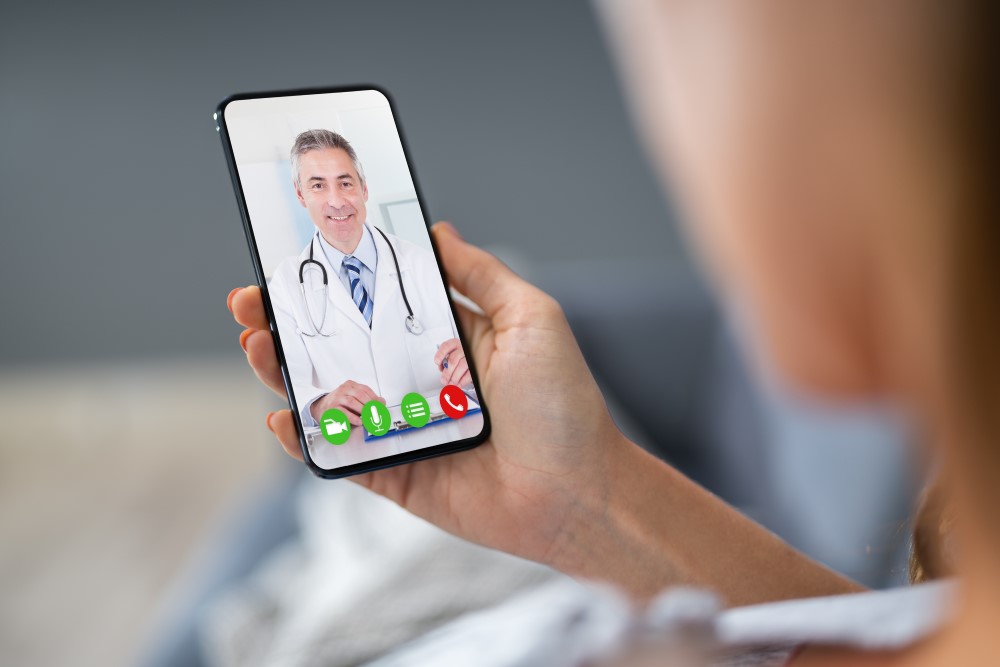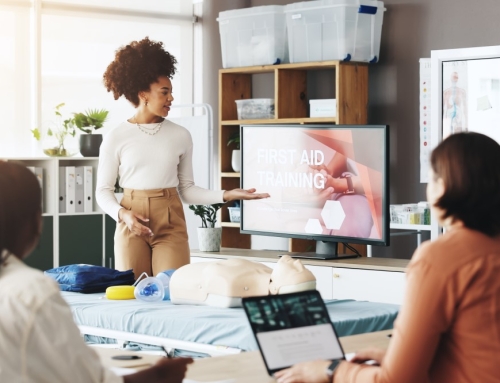While the long-term effects of the pandemic are still continuing to unfold, there are aspects of our lives that certainly look to have been reset by the changes enforced by Covid-19.
An example is how we engage with healthcare providers. For post-Covid generations, it will be entirely accepted – and perhaps even expected – for an initial interaction with a primary care provider to be carried out via a mobile phone or internet-connected device rather than via the more traditional, default route of visiting the local surgery.
This follows the almost universal introduction of remote consultations during the pandemic, when telehealth and virtual consultations were a necessary alternative to face-to-face appointments in the interests of reducing the spread of infection. Indeed, between February 2020 and April 2020, data from the NHS shows that the number of face-to-face visits fell by as much as 75%.
As the vaccination programme rolled out across the country throughout 2021 and the intensity of the pandemic eased, there was an expectation that GPs would re-open their doors and healthcare would return to something like the pre-pandemic normal. The reality, however, has been slightly different.
Digital reset for primary care
While there is no suggestion that doors were ever closed to those in need, there was no ‘great re-opening’, with many practices holding on to the benefits offered by remote consultations, such as the ability to control infection risk and manage sustained high levels of demand. This situation led to the perception, fuelled in part by media coverage, that GPs were effectively refusing to see patients in person.
Analysis published in The Lancet provides more clarity on what’s really going on behind these headlines. It found that by August 2021, while face-to-face appointments had not rebounded to pre-pandemic levels, they had in fact jumped by 89%, providing evidence of a significant rise in the number of in-person interactions between GPs and their patients. Adding in remote consultations – which are now make up the majority of appointments – the analysis showed evidence of a substantial increase in the total number of overall consultations.
This points to the suggestion that our expectations around speed of access and convenience were reset by the efficient digital healthcare provision we experienced during the pandemic. For healthcare providers, the challenge is in delivering against these digital expectations in the context of the legacy analogue model.
Healthcare in the hands of the patient
As healthcare ‘consumers’, the accessibility and availability of digital services make their appeal obvious, and many Private Medical Insurance (PMI) providers are incorporating digital GP services as a valuable addition to their policy offering. These services are often supported by apps that allow users to book and attend screen-based appointments, in some cases on a 24/7 basis, and even offering users the ability to choose the type of medical professional they want to see.
Others also incorporate functionality for users to check their symptoms directly via the app, helping them confirm their best course of action. Crucially, the patient is in control of the process, making decisions about how and when they access the support they need, whether that’s from the comfort of their own home or at convenient point in their working day.
An important benefit offered by many digital consultation services is the fact that they are integrated into associated healthcare services, helping to speed and smooth the patient journey further. Prescriptions, for example, can often be co-ordinated via an app-based digital GP service, either for home delivery or for collection via a designated local pharmacy.
Despite all these many advantages, it’s important to remember that digital healthcare does not offer a like-for-like replacement for more traditional, in-person experiences. Some assessments and tests must be carried out in approved settings – whether that’s an NHS-run location or a private medical facility. Some people will also find face-to-face communication with a healthcare professional far more engaging and valuable compared with screen-based interactions or conversations over the phone.
It is for these reasons that the hybrid healthcare model that emerged in the wake of the pandemic is likely to continue to establish itself over time. Particularly for patients with Private Medical Insurance, this can provide access to a multi-layered service, where the immediacy and convenience of virtual services are complemented by the in-depth expertise available at specialist healthcare settings in the real world.
The information contained within this communication does not constitute financial advice and is provided for general information purposes only. No warranty, whether express or implied is given in relation to such information. Vintage Health or any of its associated representatives shall not be liable for any technical, editorial, typographical or other errors or omissions within the content of this communication.





